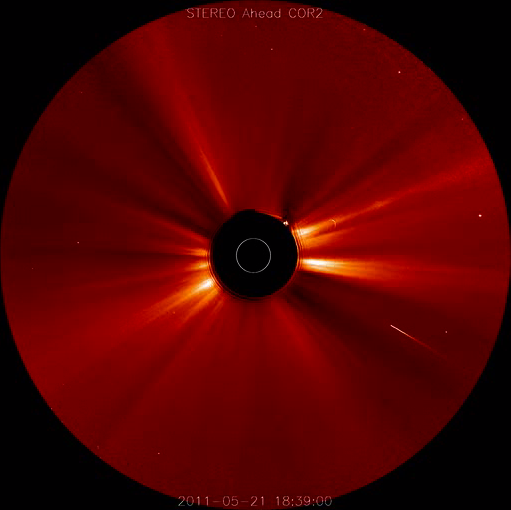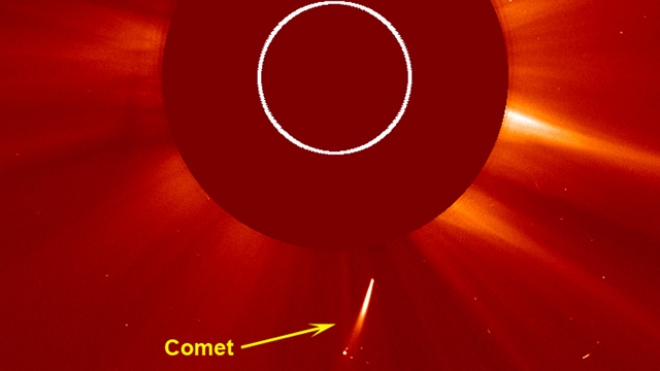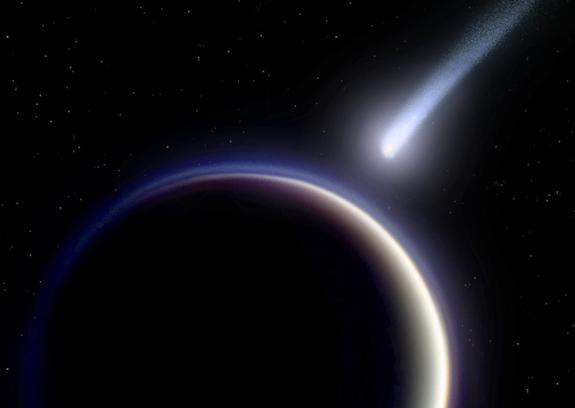OF THE
TIMES


Basically, electrons' movement is slightly retarded in the Sun's corona, with solar flares hurling out an excess number of protons. The excess protons in the solar wind creates a separation of charge throughout the entire solar system - a giant capacitor with a positively charged, doughnut-shaped nebular cloud of dust and gases stretching to the far reaches of the solar system, and the negatively charged the surface of the Sun. An electrical potential exists between these two poles and any object moving through plasma regions of varying charge density will become charged, depending on its size and relative velocity. When new bodies (e.g., comets) enter this plasma region from outer space, they ignite and begin to discharge the solar capacitor.Given the electrical nature of the Sun and comets, there is likely more than just "coincidence" at play here.

Comment: By all means read what NASA has to say about it. Then consider this...
NASA warns solar flares from 'huge space storm' will cause devastation ...and what McCanney wrote in Planet X, Comets and Earth Changes: ...before getting the real lowdown on Comet Elenin from these:
Comet Elenin is Coming!
Pole Shift in March? Not Likely!
Comet Elenin: Harbinger of What?
Comet Elenin Update!